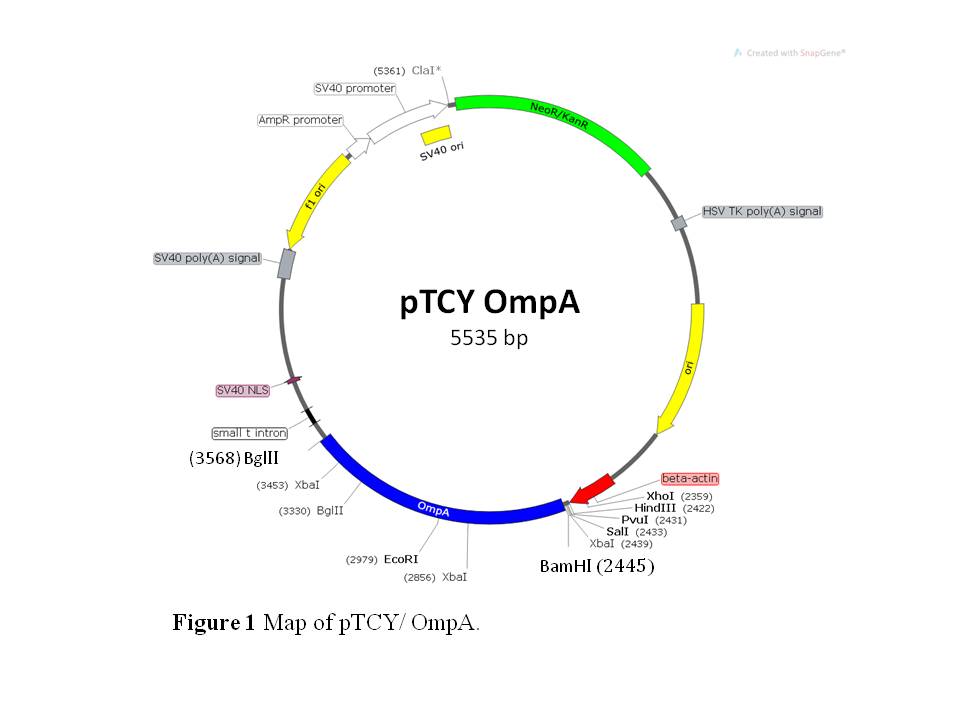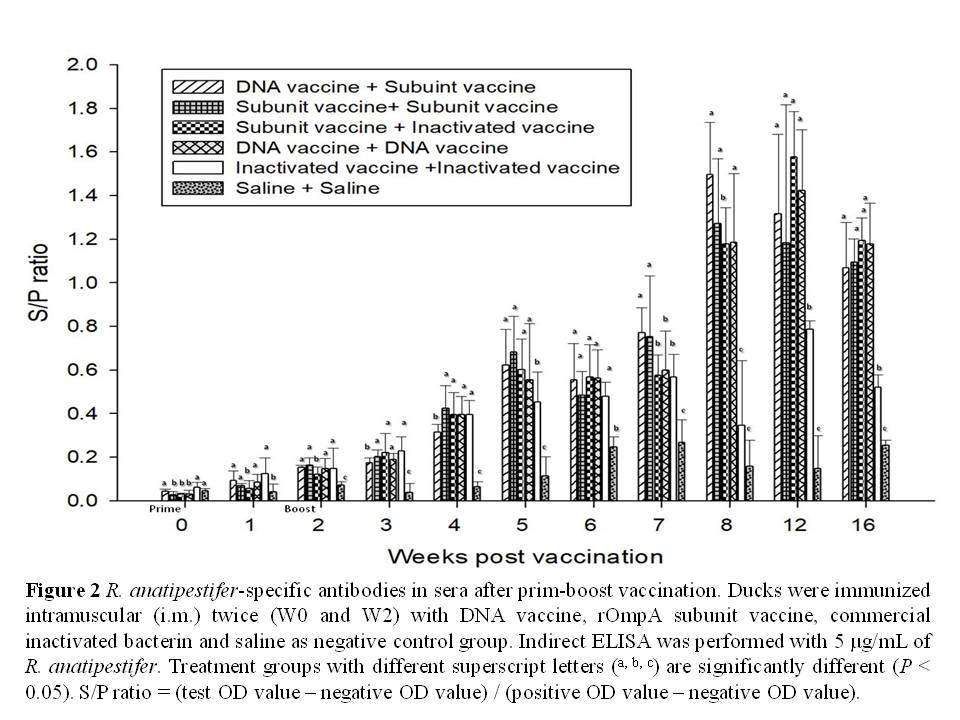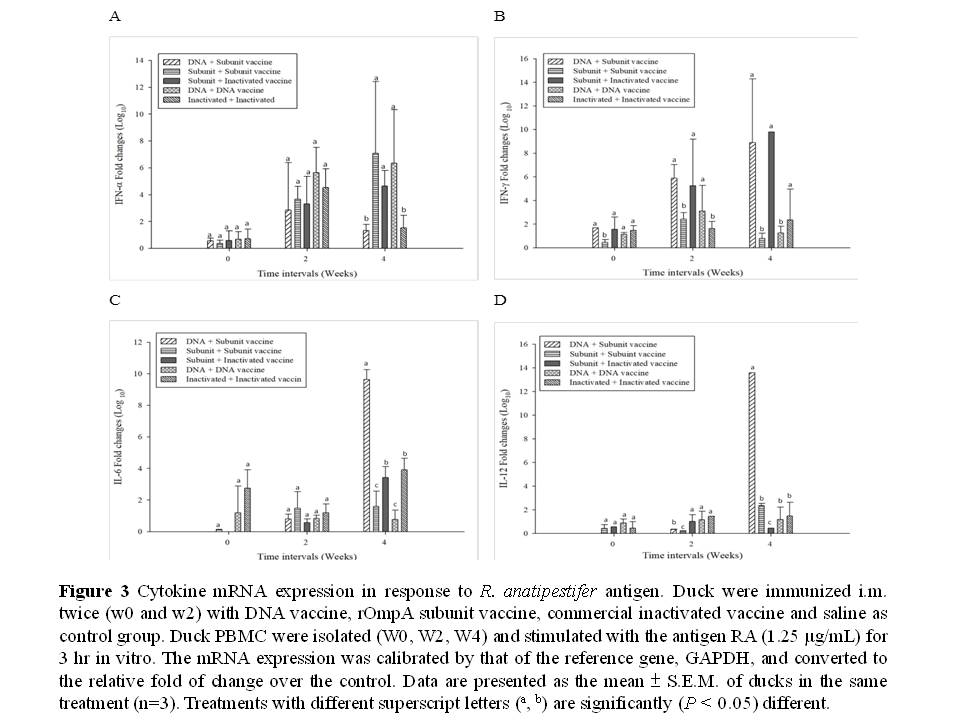| Technical Name | Assessment of immunization regimens of duck Riemerella anatipestifer vaccines | ||
|---|---|---|---|
| Project Operator | National Pingtung of Science and Technology | ||
| Project Host | 朱純燕 | ||
| Summary | Riemerella anatipestifer infections of goslings and ducklings can result in high mortality. Since there are at least 21 serotypes of R. anatipestifer, cross-protection is an important goal for vaccine development. |
||
| Scientific Breakthrough | Prime-boost regimens especially DNA-prime and protein-boost, induce strong long-term immune response and may prove protective for breeder ducks requiring long-term protection. It is worth mentioning that the Subunit + Inactivated regimen group also elicited strong immune response. The cost of this regimen may only be half of the other prime-boost regimens, making this subunit + inactivated combination an attractive option. Furthermore, as an indication of cross-protection, sera from prime-boost regimens were able to recognize lysates of R. anatipestifer serotypes 1, 2 and 6. |
||
| Industrial Applicability | In field application, vaccines that induce longer and stronger immunities can be used for breeder ducks, which require longer periods of protection than meat ducks. Stronger vaccines used for breeder ducks may also confer higher passive immunity to ducklings. Although the cost of a single prime-boost regimen using DNA and subunit vaccines could be higher than that of the conventional inactivated vaccine, better protection form prime-boost regimens could mean fewer repeated vaccinations and lower costs overall. |
||
| Keyword | Riemerella anatipestifer outer membrane protein A DNA vaccine subunit vaccine Prime-boost. cross-protection cytokine Western-blot longer lasting levels of antibody responses T cell analysis | ||
- dog811139@gmail.com
other people also saw







